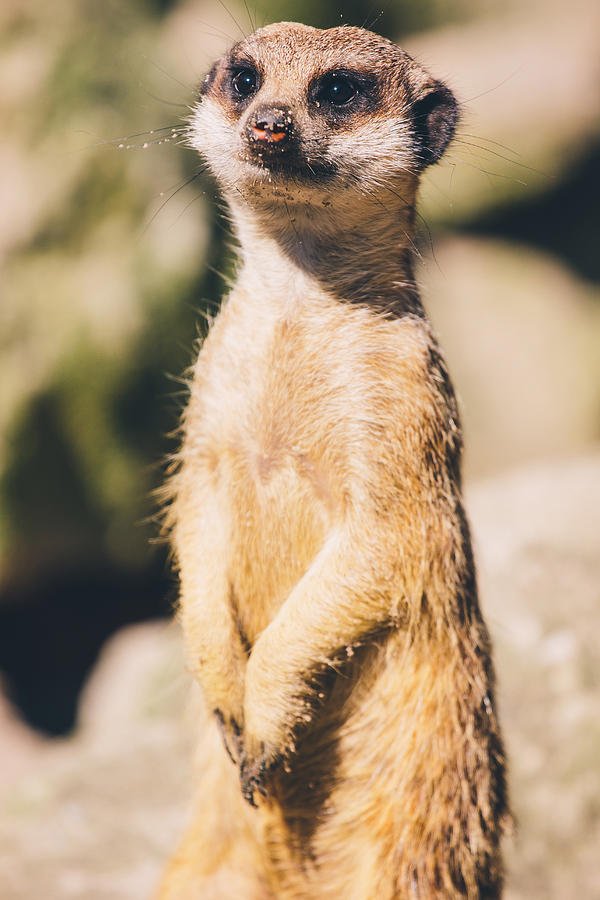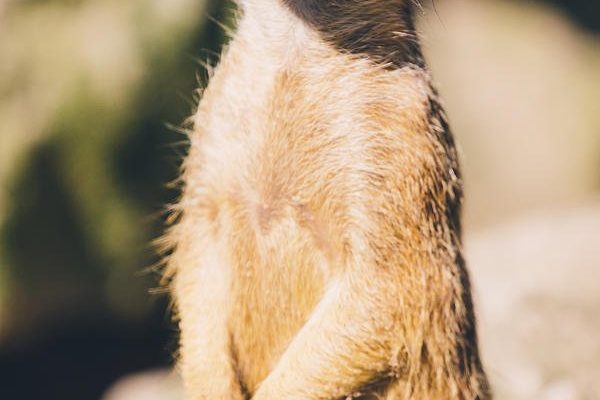
Just like how we sometimes misunderstand our friends or a new neighbor, we often misinterpret the behavior and characteristics of meerkats. Are they really just tiny animals that stand on their hind legs? Do they have a strict hierarchy? And why on Earth do they dig so much? Let’s dive into the delightful world of meerkats to clear up these common misunderstandings.
Myth
You might think of meerkats as nothing more than cute little furballs. While they certainly are adorable, there’s so much more to them than their charming looks. Meerkats are highly social animals that live in groups called mobs. These mobs can include up to 50 members, and they have complex social structures.
Let me explain. Every meerkat has a role to play—some are sentinels, standing guard and watching for predators, while others are tasked with digging for food. This teamwork is critical for their survival. So, while they might look cute, they’re also smart and organized creatures that rely on one another to thrive in the wild.
Social Structures of Meerkats
The social hierarchy in a meerkat mob is quite fascinating. There’s usually a dominant pair that leads the group and is responsible for breeding. All other members assist in raising the young, sharing the responsibilities of feeding and protecting them. Isn’t it impressive how they work together? Their strong community bonds are a big part of what makes meerkats unique.
It’s important to remember that their social dynamics are similar to those of some human societies, where teamwork and leadership are key to success. So, the next time you see a meerkat standing up, think of it as not just a cute pose but also a crucial part of its community role!
Myth
You might see videos of meerkats standing guard and think they’re always on alert. While they certainly have watchful eyes—and with good reason—they also know how to relax and enjoy life. It’s easy to picture them as serious little guards, but they actually have a playful side, too.
When they’re not on duty, meerkats engage in a variety of activities. They groom each other, playfully wrestle, and even bask in the sun. It’s a balance of work and play that keeps the mob healthy and happy. They’ve got a great sense of community and make sure to have fun, which is something we can all appreciate.
Rest and Relaxation
You might be wondering, “How do they manage to balance it all?” Well, when one meerkat takes on the role of sentinel, the others can relax. It’s like taking a shift at work while your friends enjoy a coffee break. This system allows them to strategize and stay alert to potential threats while still enjoying their social time together.
So, while they are known for their vigilance, it’s crucial to acknowledge that they also know how to kick back and enjoy life. This mix of diligence and playfulness is truly what makes meerkats so captivating!
Myth
Another common misconception is that meerkats are strictly carnivorous. While they do have a varied diet, you might be surprised to learn they are not all about meat. Their meals mainly consist of insects, but they also munch on fruit, plants, and even small reptiles or eggs when available.
Here’s the thing: meerkats are opportunistic eaters. This means they will eat whatever is available. In their natural habitat, which is typically arid regions of southern Africa, they must adapt their diet to what the environment offers. So, if you ever thought they only feast on critters, think again!
Foraging Strategies
When foraging for food, meerkats team up. They dig through the ground to unearth insects and use their sharp claws to help them find dinner. In a way, you could compare their foraging techniques to a group of friends searching for snacks at a picnic. They work together, share finds, and celebrate a successful hunt.
This ability to adapt their diet is part of what allows meerkats to thrive in often harsh environments. So, while they may love a good bug, they also appreciate a little variety in their meals!
Myth
It’s easy to think that something as cute as a meerkat wouldn’t have any natural enemies. However, the truth is that they do face threats from various predators, including snakes, birds of prey, and larger mammals like jackals and foxes.
In the wild, meerkats have to be vigilant. That’s why you often see them standing upright—it’s a crucial survival tactic. By standing tall, they can spot trouble from a distance and alert the rest of the mob. If you think about it, this is much like us scanning a crowded room for familiar faces—it’s all about awareness!
The Importance of Vigilance
This need for vigilance underscores the importance of their social structure. With members of the mob looking out for each other, meerkats can reduce the risk of falling prey to these natural enemies. They’ve created a system where teamwork enhances survival—a lesson we could all take to heart!
So next time you see a meerkat, remember they live in a world full of potential dangers, but their cleverness and teamwork help them navigate those risks.
Myth
Some folks think that keeping a meerkat as a pet would be a fun idea because of their playful nature. While they are indeed fascinating creatures, they are not suitable pets. Meerkats are wild animals that thrive best in their natural habitats or in the wild. Keeping them confined can lead to stress and behavioral issues.
Honestly, it’s like trying to keep a lion as a house cat—what might seem captivating in theory can be a disaster in practice. Meerkats need social interaction with their kind and space to roam, dig, and forage.
Respecting Wild Animals
It’s essential to respect the natural behaviors and needs of these animals. They are not toys or pets, but unique creatures that play a vital role in their ecosystems. If you’re interested in meerkats, consider visiting a wildlife sanctuary or zoo where you can observe them in a safe and natural setting. This way, you’ll appreciate their unique qualities without compromising their well-being!
Meerkats are remarkable creatures teeming with personality, intelligence, and social complexity. They’re more than just adorable animals popping out of burrows; they’re social beings with strong community ties, expert foragers, and resilient survivors. By dispelling the myths and misconceptions surrounding meerkats, we can gain a deeper understanding and appreciation for them.
Next time you think of meerkats, remember their social structures, playful natures, and their need for community. They’re doing their best to navigate the challenges of life in the wild, just like we are in our own ways. So, let’s cheer on these little warriors of the wild, acknowledging their beauty and importance in our world!

